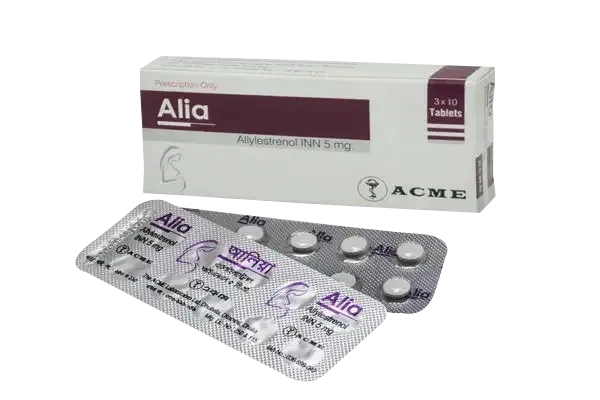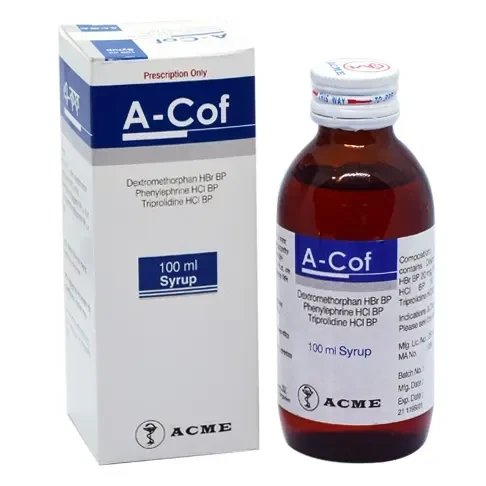

Oxat Tablet, Paroxetine Hydrochloride 20 mg
Inhouse product
-
৳11.40
৳12.00 -
৳42.75
৳45.00 -
৳16.63
৳17.50 -
৳2.14
৳2.25
Reviews & Ratings
Indications
Oxat is
indicated in:
- Major Depressive Disorder
- Obsessive Compulsive Disorder
- Panic Disorder
- Social Anxiety Disorder
- Generalized Anxiety Disorder
- Posttraumatic Stress Disorder.
* রেজিস্টার্ড চিকিৎসকের পরামর্শ মোতাবেক ঔষধ সেবন করুন'
Pharmacology
The efficacy of
Paroxetine is presumed to be linked to potentiation of serotonergic activity in
the central nervous system resulting from inhibition of neuronal reuptake of
serotonin (5-hydroxy-tryptamine, 5 HT). Studies at clinically relevant doses in
humans have demonstrated that paroxetine blocks the uptake of serotonin into human
platelets. In vitro studies in animals also suggest that paroxetine is a potent
and highly selective inhibitor of neuronal serotonin reuptake and has only very
weak effects on norepinephrine and dopamine neuronal reuptake. In vitro
radioligand binding studies indicate that paroxetine has little affinity for
muscarinic, alpha1, alpha2, beta adrenergic, dopamine (D2), 5-HT1, 5 HT2 and
histamine (H1)-receptors; antagonism of muscarinic, histaminergic and
alpha1-adrenergic receptors has been associated with various anticholinergic,
sedative and cardiovascular effects for other psychotropic drugs. Because the
relative potencies of paroxetine’s major metabolites are at most 1/50 of the
parent compound, they are essentially inactive.
Dosage & Administration
Major Depressive
Disorder:
- Usual Initial
Dosage: Paroxetine (Paroxetine
hydrochloride) should be administered as a single daily dose with or
without food, usually in the morning. The recommended initial dose is 20
mg/day. Some patients not responding to a 20 mg dose may benefit from dose
increases, in 10 mg/day increments, up to a maximum of 50 mg/day. Dose
changes should occur at intervals of at least 1 week.
- Maintenance
Therapy: Systematic evaluation of the
efficacy of Paroxetine hydrochloride has shown that efficacy is maintained
for periods of up to 1 year with doses that averaged about 30 mg.
Obsessive Compulsive
Disorder (OCD):
- Usual Initial
Dosage: Paroxetine (Paroxetine hydrochloride)
should be administered as a single daily dose with or without food,
usually in the morning. The recommended dose of Paroxetine in the
treatment of OCD is 40 mg daily. Patients should be started on 20 mg/day
and the dose can be increased in 10 mg/day increments. Dose changes should
occur at intervals of at least 1 week.
- Maintenance
Therapy: Dosage adjustments should be
made to maintain the patient on the lowest effective dosage, and patients
should be periodically reassessed to determine the need for continued
treatment.
Panic Disorder:
- Usual Initial
Dosage: Paroxetine should be
administered as a single daily dose with or without food, usually in the
morning. The target dose of Paroxetine in the treatment of panic disorder
is 40 mg/day. Patients should be started on 10 mg/day. Dose changes should
occur in 10 mg/day increments and at intervals of at least 1 week. The
maximum dosage should not exceed 60 mg/day.
- Maintenance
Therapy: Dosage adjustments should be
made to maintain the patient on the lowest effective dosage, and patients
should be periodically reassessed to determine the need for continued
treatment.
Social Anxiety
Disorder (SAD):
- Usual Initial
Dosage: Paroxetine should be
administered as a single daily dose with or without food, usually in the
morning. The recommended initial dosage is 20 mg/day.
- Maintenance
Therapy: Dosage adjustments should be
made to maintain the patient on the lowest effective dosage, and patients
should be periodically reassessed to determine the need for continued
treatment.
Generalized Anxiety
Disorder (GAD):
- Usual Initial
Dosage: Paroxetine should be
administered as a single daily dose with or without food, usually in the
morning. The recommended starting dosage and the established effective
dosage is 20 mg/day.
- Maintenance
Therapy: Dosage adjustments should be
made to maintain the patient on the lowest effective dosage, and patients
should be periodically reassessed to determine the need for continued
treatment.
Posttraumatic Stress
Disorder (PTSD):
- Usual Initial
Dosage: Paroxetine should be
administered as a single daily dose with or without food, usually in the
morning. The recommended starting dosage and the established effective
dosage is 20 mg/day. Dose changes, if indicated, should occur in 10 mg/day
increments and at intervals of at least 1 week.
- Maintenance
Therapy: Dosage adjustments should be
made to maintain the patient on the lowest effective dosage, and patients
should be periodically reassessed to determine the need for continued
treatment.
* রেজিস্টার্ড চিকিৎসকের পরামর্শ মোতাবেক ঔষধ সেবন করুন'
Interaction
Food/antacids: The absorption and pharmacokinetics of Oxat
are not affected by food or antacids.
Tryptophan: As with other 5-HT re uptake inhibitors,
animal studies indicate that an interaction between Oxat and Tryptophan may
occur, resulting in a ‘serotonin syndrome’ suggested by a combination of
agitation, restlessness and gastrointestinal symptoms including
diarrhoea.
Drug metabolizing
enzyme inducers /inhibitors:
The metabolism and pharmacokinetics of Oxat may be affected by drugs, which
induce or inhibit hepatic drug metabolizing enzymes. When Oxat is to be
coadministered with a known drug metabolizing inhibitor, consideration should
be given to using doses at the lower end of the range. No initial dosage
adjustment of Oxat is considered necessary when it is to be co-administered
with known drug metabolizing enzyme inducers. Any subsequent dosage adjustment
should be guided by clinical effect (tolerabilityand efficacy).
Alcohol: Although Oxat does not increase the
impairment of mental and motor skill caused by alcohol, the concomitant use of
Oxat and alcohol in depressed patients is not advised.
Haloperidol/amylobarbitone/oxazepam: Experience in a limited number of healthy
subjects has shown that Oxat did not increase the sedation and drowsiness
associated with haloperidol, amylobarbitone or oxazepam when given in
combination.
MAOls: As with other 5-HT re uptake inhibitors,
animal studies indicate that an interaction between Oxat and monoamine oxidase
(MAO) inhibitors may occur.
Lithium: Since there is little clinical experience,
and there have been reports of interaction of lithium with other 5-HT re-uptake
inhibitors, the concurrent administration of Oxat and lithium should be
undertaken with caution.
Lithium levels should
be monitored. Phenytoin / anticonvulsants: Co-administration of Oxat and phenytoin is
associated with decreased plasma concentrations of Oxat and increased adverse
experiences. Co-administration of Oxat with other anticonvulsants may also be
associated with an increased incidence of adverse experiences.
Warfarin: Preliminary data suggest that there may be a
pharmacodynamic interaction between Oxat and warfarin, which may result in
increased bleeding in the presence of unaltered prothrombin times. Oxat should
therefore be administered with great caution to patients receiving oral
anticoagulants.
Contraindications
Concomitant use in
patients taking either monoamine oxidase inhibitors (MAOIs) or thioridazine is
contraindicated. This is contraindicated in patients with a hypersensitivity to
Paroxetine.
Side Effects
Major depressive
disorder: Asthenia,
sweating, nausea, decreased appetite, somnolence, dizziness, insomnia, tremor,
nervousness, ejaculatory disturbance and other male genital disorders.
Obsessive compulsive
disorder: Nausea, dry
mouth, decreased appetite, constipation, dizziness, somnolence, tremor,
sweating, impotence and abnormal ejaculation.
Panic disorder: Asthenia, sweating, decreased appetite,
decreased libido , tremor, abnormal ejaculation, female genital disorders and
impotence.
Social anxiety
disorder: Sweating,
nausea, dry mouth, constipation, decreased appetite, somnolence, tremor,
decreased libido, yawn, abnormal ejaculation, female genital disorders and
impotence.
Generalised anxiety
disorder: Asthenia,
infection, constipation, decreased appetite, dry mouth, nausea, decreased
libido, somnolence, tremor, sweating and abnormal
ejaculation.
Post-traumatic stress
disorder: Asthenia,
sweating nausea, dry mouth, diarrhoea, decreased appetite, somnolence,
decreased libido, abnormal ejaculation, female genital disorders and impotence.
Pregnancy & Lactation
This drug should be
used during pregnancy only if the potential benefit justifies the potential
risk to the fetus.
Labor and Delivery: The effect of Paroxetine on labor and delivery
in humans is unknown.
Nursing Mothers: Like many other drugs, Paroxetine is
secreted in human milk, and caution should be exercised when Paroxetine
hydrochloride is administered to a nursing woman.
Precautions & Warnings
Cardiac conditions: Oxat does not produce clinically significant
changes in blood pressure, heart rate and ECG. Nevertheless, as with all
psychoactive drugs, caution is advised when treating patients with cardiac
conditions.
Epilepsy: As with other antidepressants, Oxat should
be used with caution in-patients with epilepsy.
Seizures: Overall, the incidence of seizures is <
0.1% in patients treated with Oxat. Oxat should be discontinued in any patient
who develops seizures.
ECT: There is little clinical experience of concurrent
administration of Oxat with ECT.
Ability to drive/use
machines: Clinical experience
has shown that therapy with Oxat is not associated with impairment of cognitive
or psychomotor function. However, as with all psychoactive drugs, patients
should be cautioned about their ability to drive a car and operate machinery.
Discontinuation of
Treatment with Oxat: Recent clinical
trials supporting the various approved indications of Oxat employed a
taper phase regimen, rather than an abrupt discontinuation of treatment. The
taper phase regimen used in GAD and PTSD clinical trials involved an
incremental decrease in the daily dose by 10 mg/day at weekly intervals. When a
daily dose of 20 mg/day was reached, patients were continued on this dose for 1
week before treatment was stopped.
Use in Special Populations
Dosage for Elderly or
Debilitated, and Patients with Severe Renal or Hepatic Impairment: The recommended initial dose is 10 mg/day
for elderly patients, debilitated patients, and/or patients with severe renal
or hepatic impairment. Increases may be made if indicated. Dosage should not
exceed 40 mg/day.
Therapeutic Class
SSRIs & related
anti-depressant drugs
Storage Conditions
Keep out of the reach
of children. Store at a cool and dry place. Protect from light and moisture.
Frequently Bought Products
Alia Tablet, Allylestrenol 5 mg
Solo Nasal Drop 10ml, Sodium Chloride 0.9%
Anzitor Tablet , Atorvastatin Calcium 40 mg
Vasoproct Capsule, Calcium Dobesilate 500 mg
Methipred Tablet, Methylprednisolone 4 mg
Product Queries (0)
Login Or Registerto submit your questions to seller
Other Questions
No none asked to seller yet
-
৳11.40
৳12.00 -
৳42.75
৳45.00 -
৳16.63
৳17.50 -
৳2.14
৳2.25

















